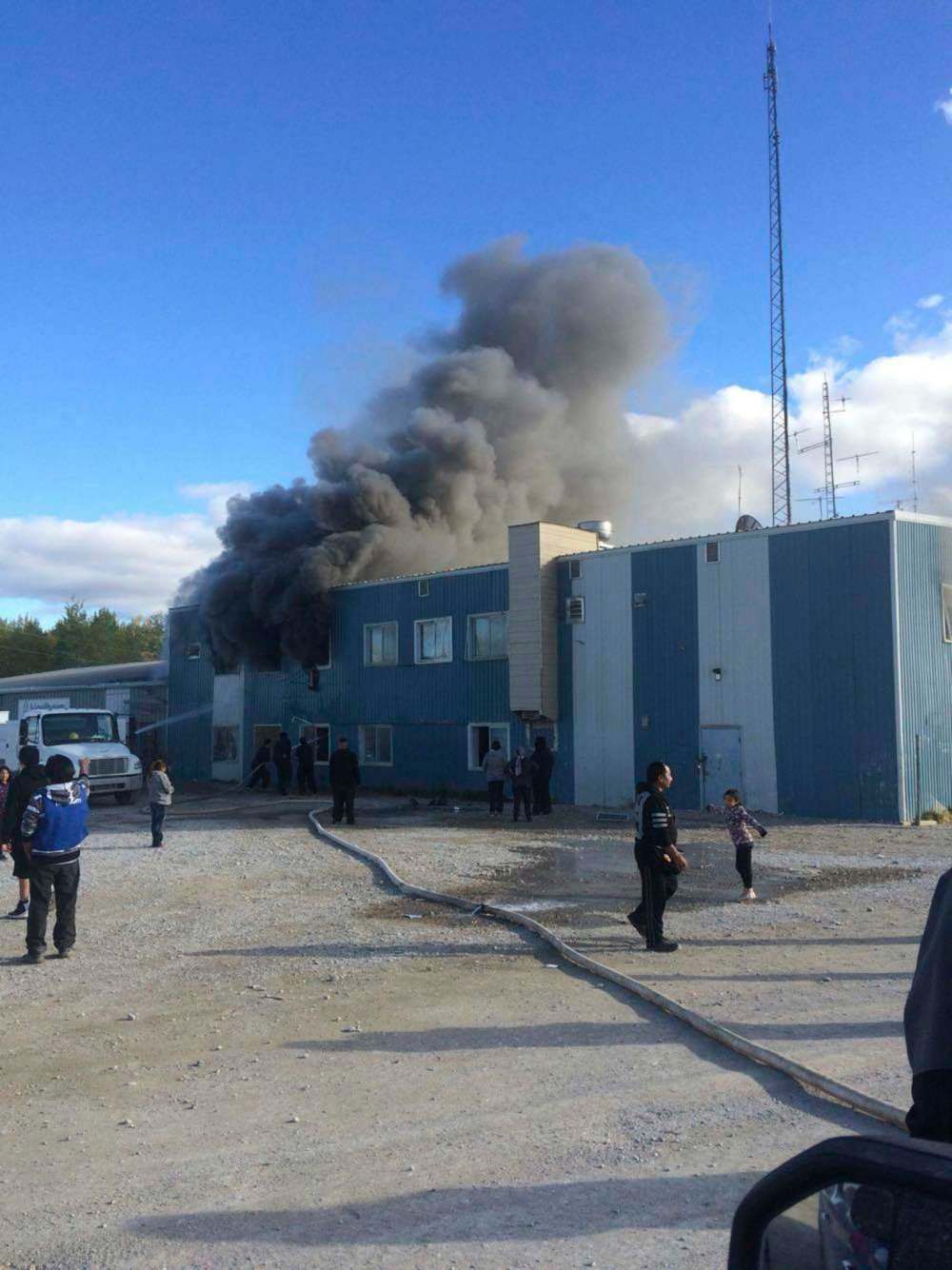First Nations’ firefighting resources meagre: report
2012 survey of 61 Manitoba reserves paints bleak picture
Advertisement
Read this article for free:
or
Already have an account? Log in here »
To continue reading, please subscribe:
Monthly Digital Subscription
$1 per week for 24 weeks*
- Enjoy unlimited reading on winnipegfreepress.com
- Read the E-Edition, our digital replica newspaper
- Access News Break, our award-winning app
- Play interactive puzzles
*Billed as $4.00 plus GST every four weeks. After 24 weeks, price increases to the regular rate of $19.00 plus GST every four weeks. Offer available to new and qualified returning subscribers only. Cancel any time.
Monthly Digital Subscription
$4.75/week*
- Enjoy unlimited reading on winnipegfreepress.com
- Read the E-Edition, our digital replica newspaper
- Access News Break, our award-winning app
- Play interactive puzzles
*Billed as $19 plus GST every four weeks. Cancel any time.
To continue reading, please subscribe:
Add Free Press access to your Brandon Sun subscription for only an additional
$1 for the first 4 weeks*
*Your next subscription payment will increase by $1.00 and you will be charged $16.99 plus GST for four weeks. After four weeks, your payment will increase to $23.99 plus GST every four weeks.
Read unlimited articles for free today:
or
Already have an account? Log in here »
Hey there, time traveller!
This article was published 23/09/2016 (3325 days ago), so information in it may no longer be current.
OTTAWA — It’s no surprise a remote Manitoba reserve had no working fire truck to help fight a blaze Thursday that destroyed its band office, radio station and only store.
A 2012 survey on firefighting capacity, conducted by the Manitoba government and Assembly of Manitoba Chiefs, found Manitoba First Nations do not have the equipment, training, funding or organization to prevent and respond to fires.
“Most Manitoba First Nations fire departments are not in a position to respond effectively to fires in their communities,” the report says.

The Free Press obtained the survey through access to information.
More than one-quarter of the 61 First Nations surveyed didn’t have a fire truck. Almost nine out of 10 reported not having enough fire hoses to meet their needs.
Only one-fifth of the communities reported having enough other equipment, such as axes and ladders.
Shamattawa, a Cree nation 720 kilometres north of Winnipeg, could do little to stop its band office, Northern Store and radio station from burning to the ground.
Its only fire truck arrived from Winnipeg last winter, but it was broken and it had not been repaired, a councillor said.
Carolyn Campbell, director of communications for Indigenous Affairs Minister Carolyn Bennett, said in a statement Friday the government believes fire protection is an “essential service that can make a difference between life and death.”
She said the recent federal budget invested $255 million over two years for First Nations infrastructure, including fire protection.
There is no breakdown by province or First Nation for fire protection.
In 2011, a report suggested Manitoba reserves needed at least $28 million to bring fire protection equipment up to par.
Campbell said the fire truck in Shamattawa was purchased last year for $227,854.
“We are aware the band and distributor of the fire truck have been working to identify mechanical issue; we are working with the band on addressing these issues,” she said.
The survey also found only one in five First Nations has personal protective gear for firefighters or individual breathing apparatus to allow them to do more than stand outside a fire and project water onto it.
On average, reserves had nine staff members working or volunteering for the fire department, but fewer than two people on each reserve had the training to be accredited as a firefighter.
“There is a shortfall in fire-protection services in Manitoba First Nation communities when compared to what is available in most non-First Nation communities in the province,” the report says.
Only 13 per cent of First Nations have a 911 system.
Shamattawa was one of them, however, its 911 system was in the radio station hit by the fire.
The survey found a serious gap in governance, with many leaders unaware of their firefighting budget or who was responsible for overseeing it.
Ninety-three per cent of First Nations have no fire-protection plan; 89 per cent have no written bylaws to outline firefighting responsibilities and 85 per cent have no operating guidelines for their fire departments.
Thirty-eight First Nations had agreements to receive firefighting services from nearby municipalities — but only 10 of those communities had those agreements in writing.
The survey found, on average, firefighting budgets on First Nations are about one-third of what they are in similar-sized non-First Nation communities.
It found non-First Nations had twice as many fire trucks and more than double the number of breathing equipment for firefighters than similar-sized First Nations.
There is also a serious lack of fire prevention on reserves: fewer than five per cent of First Nations require building permits that would ensure construction meets safety codes, and only 18 per cent had a fire-prevention inspection program.
Only 11 per cent had fire-safety education.
“As the incidence of fires in First Nations communities is significantly higher than in non-First Nation communities, and the capacity for responding to fires is generally lower, it is very concerning how few of these communities have fire-prevention programs in place,” the report says.
The survey found there is no adequate system for reporting fires and fire losses on Manitoba reserves.
Earlier this week, the federal government acknowledged it had stopped collecting data on fires on reserves in 2010.
mia.rabson@freepress.mb.ca
History
Updated on Friday, September 23, 2016 8:46 PM CDT: Clarifies access to information request paragraph.


